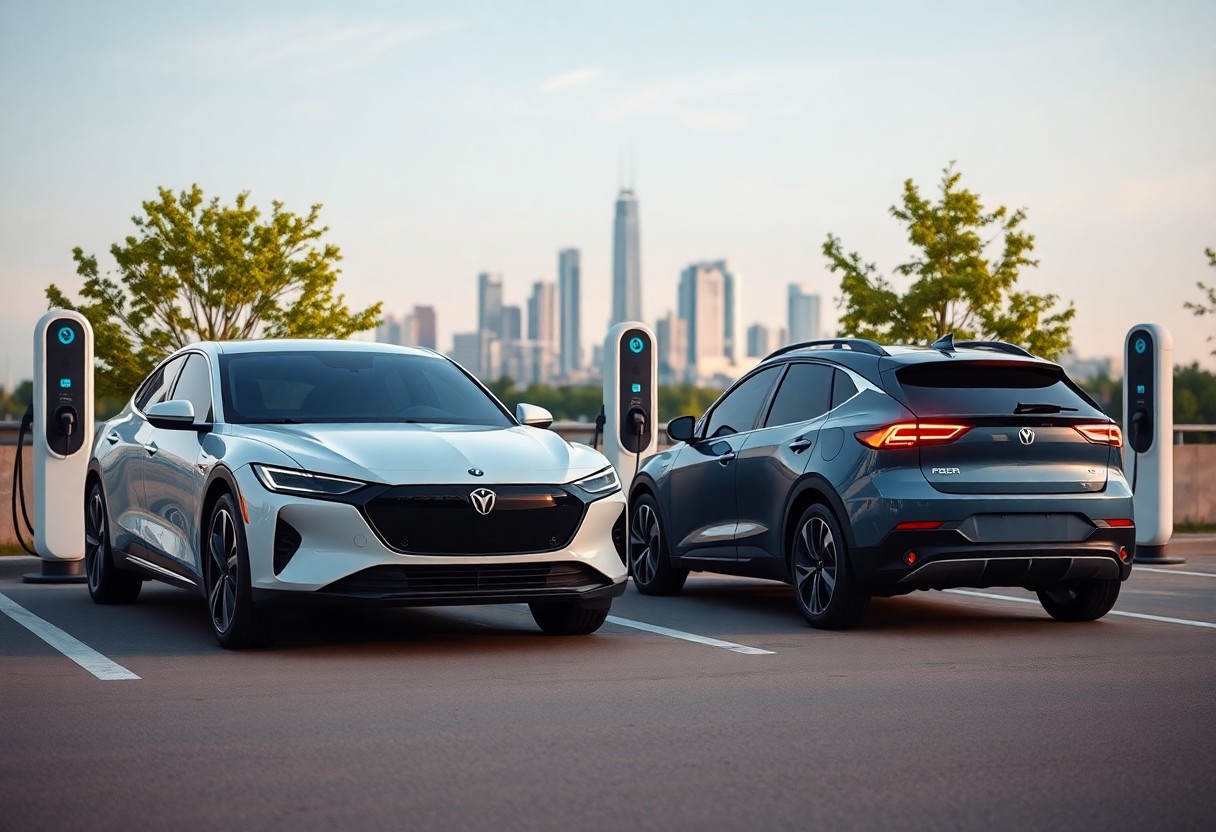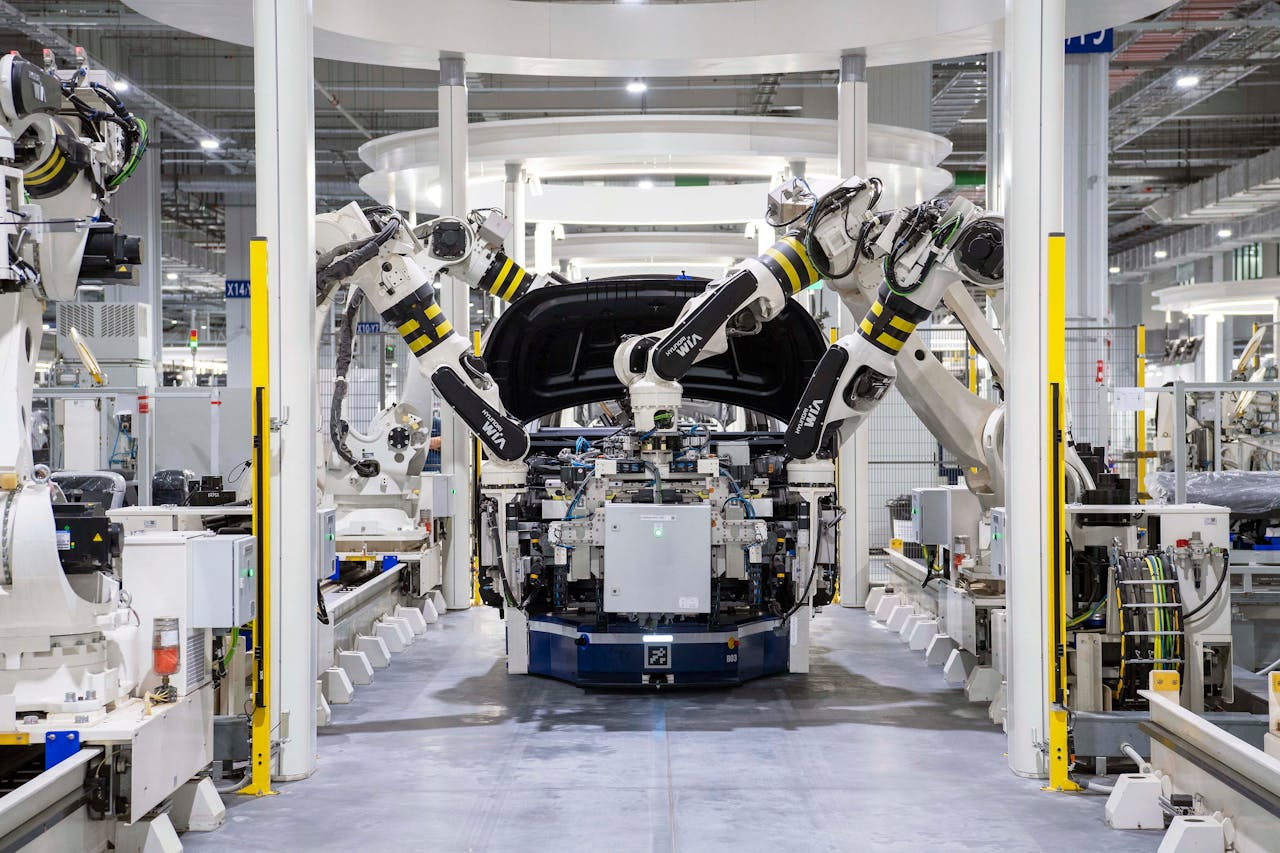Electric vehicles have surged ahead in the quest for sustainable transportation, but you may wonder if hydrogen cars can also play a significant role in achieving zero emissions. As innovations unfold in both technologies, understanding the strengths and weaknesses of each is important for informed decision-making. You can explore insights into the factors influencing this competition by checking out Why have electric vehicles won out over hydrogen cars (so far). This post will probe into the viability of hydrogen cars and their potential to challenge electric vehicles in the market.
Overview of Hydrogen Cars
The rise of hydrogen cars presents an intriguing alternative to battery electric vehicles. These vehicles use hydrogen fuel cells to generate electricity, offering the potential for long driving ranges and faster refueling times. As the technology progresses, you may find hydrogen cars increasingly appealing due to their environmental benefits and efficiency in energy conversion.
Technology and Functionality
At the core of hydrogen cars is the fuel cell, which combines hydrogen and oxygen to produce electricity, water, and heat. This innovative process powers the electric motor, providing a smooth and silent ride. You can benefit from quick refueling, as it takes only a few minutes, making hydrogen cars convenient for daily use while maintaining zero emissions at the tailpipe.
Current Market Landscape
Against the backdrop of growing interest in sustainable transport, hydrogen cars face a competitive market. While several automakers are investing in hydrogen technology, the overall adoption rate remains lower than that of electric vehicles. The limited availability of hydrogen refueling stations is a barrier that you might encounter when considering this option.
Landscape analysis of the current hydrogen vehicle market reveals a dichotomy between innovation and infrastructure challenges. Although major manufacturers like Toyota and Hyundai have developed hydrogen models, the market’s growth hinges on creating a supportive refueling network. As you explore options for zero-emissions vehicles, it’s important to weigh the potential convenience of hydrogen against the established presence of electric vehicle charging stations.

Electric Vehicles: A Brief Overview
Any discussion about zero-emission vehicles would be incomplete without mentioning electric vehicles (EVs). These vehicles utilize electric power for propulsion, offering a cleaner alternative to traditional gasoline-powered cars. With advances in technology, EVs have become more efficient, practical, and accessible, making them an attractive option for environmentally conscious consumers and businesses alike.
Technology and Functionality
Brief advancements in battery technology and electric drivetrains have significantly improved the performance and range of EVs. Today’s models often feature fast charging capabilities, regenerative braking, and smart connectivity options, providing you with a seamless driving experience. As technology continues to evolve, the efficiency and appeal of electric vehicles will only grow stronger.
Adoption Rates and Market Trends
Along with technological advancements, the adoption rates for electric vehicles have surged in recent years. As governments worldwide implement stricter emissions regulations and offer incentives for EV purchases, you can expect to see a rising number of charging stations and a broader variety of models available in the market.
Market forecasts indicate that electric vehicle sales are set to outpace traditional vehicles over the coming years. As more consumers prioritize sustainability, automakers are investing heavily in EV technology, creating a competitive landscape. Your decision to switch to an EV benefits not just your wallet through lower running costs, but also contributes to global efforts in reducing greenhouse gas emissions.
Comparison of Emission Levels
Even as the automotive industry shifts towards sustainability, understanding the emission levels of hydrogen cars versus electric vehicles is imperative. You may wonder how these two technologies stack up in terms of environmental impact. The table below breaks down their emission levels:
Emission Comparison
| Vehicle Type | Emission Levels |
|---|---|
| Hydrogen Cars | Water vapor, low greenhouse gases |
| Electric Vehicles | Zero tailpipe emissions, but dependent on energy source |
Lifecycle Emissions of Hydrogen vs. Electric Vehicles
Emissions from hydrogen cars primarily occur during production, transportation, and fueling, alongside minimal tailpipe emissions. In contrast, electric vehicles generate zero emissions at the point of use, but their lifecycle emissions greatly depend on the energy sources used for electricity generation.
Infrastructure and Energy Sources
Above all, the infrastructure required for hydrogen and electric vehicles plays a significant role in their emission profiles. The readiness of charging stations or hydrogen refueling sites impacts the overall environmental benefits of these vehicles.
At this stage, hydrogen refueling infrastructure is still limited compared to the growing network of electric vehicle charging stations. You may find that electricity for EVs often comes from renewable sources, reducing their lifecycle emissions. However, the efficiency of hydrogen production methods must also improve to ensure that its zero-emission promise holds true, which is imperative in this transition to sustainable transport solutions. For further insights, check out this discussion on Can hydrogen replace electric cars in the race for green ….
Cost Analysis
After exploring the viability of hydrogen cars versus electric vehicles (EVs), it’s vital to analyze the costs involved. Both technologies come with unique financial implications, affecting their affordability and market penetration. The initial investment, operational costs, and depreciation rates must be thoroughly examined to understand how each option fares in achieving zero emissions while being financially viable for consumers like you.
Manufacturing and Maintenance Costs
Along with understanding the purchase price, you should consider the manufacturing and maintenance costs associated with hydrogen cars and electric vehicles. Generally, hydrogen vehicles may have higher manufacturing expenses due to their complex systems and components. Additionally, maintenance costs can vary, as hydrogen fuel cells require specialized service, which may not be as readily available as traditional EV maintenance. Knowing these details can help you make an informed decision when choosing between the two options.
Government Incentives and Market Dynamics
Incentives play a significant role in shaping the market dynamics for both hydrogen cars and electric vehicles. Governments worldwide are implementing various subsidies, tax credits, and grants to promote cleaner transportation solutions. Understanding how these incentives impact the overall cost and affordability of hydrogen and electric vehicles is vital for you to maximize savings and benefit from potential rebates.
It is vital to consider how government incentives and market dynamics can skew the cost analysis towards one option over the other. For example, many regions offer enticing benefits for electric vehicle purchases, which can significantly lower your out-of-pocket expenses. Conversely, as hydrogen technology matures and becomes more widespread, similar incentives may emerge, enhancing its appeal. Staying informed about these developments can empower you to make decisions that align with your financial and environmental priorities.
Consumer Perception and Acceptance
Unlike electric vehicles, hydrogen cars face a unique set of perceptions from consumers, influenced by factors such as infrastructure availability and environmental concerns. Many potential drivers are intrigued by the promises of hydrogen fuel technology but remain skeptical about its practicality and long-term benefits. Acceptance hinges on education and understanding the technology behind hydrogen fuel cells as a feasible alternative to traditional electric vehicles.
Public Awareness and Misconceptions
Around 70% of consumers remain unfamiliar with hydrogen fuel cell technology, leading to misconceptions about its safety and effectiveness. Many equate hydrogen with explosive incidents from the past, creating a negative bias that overshadows its potential as a zero-emissions vehicle. Improving public awareness can combat these misunderstandings and promote a more balanced perspective on hydrogen cars.
Factors Influencing Consumer Choices
Choices made by consumers when considering vehicle options can vary based on numerous factors, including:
- Environmental impact
- Available refueling infrastructure
- Initial purchase price
- Long-term operational costs
- Performance and range capabilities
Assume that consumers weigh these factors differently based on personal values and experiences, creating a complex landscape of preferences that can significantly impact market adoption.
Awareness of both hydrogen and electric vehicles’ unique advantages and disadvantages can shape your decision-making. When evaluating options, consider the following aspects:
- Availability of refueling stations
- Your typical driving range and habits
- Long-term environmental goals
- Government incentives for clean energy vehicles
- Technological advancements in both fields
Assume that factoring in these elements will lead you to a more informed choice regarding whether a hydrogen or electric vehicle aligns better with your lifestyle and ethical considerations.

Future Prospects and Innovations
Once again, the automotive landscape stands on the brink of transformation as hydrogen cars and electric vehicles vie for dominance in the pursuit of zero emissions. By harnessing cutting-edge technologies and fostering innovative collaborations, the future may hold exciting prospects for both fuel types. Implementing improved infrastructure and integrating alternative energy solutions could redefine how you perceive clean transportation.
Advancements in Hydrogen Technology
By embracing ongoing research and development, hydrogen technology is evolving rapidly, leading to enhanced fuel cell efficiency, reduced production costs, and increased vehicle range. These advancements make hydrogen cars an increasingly appealing option for your driving experience, offering a sustainable alternative that complements the electric vehicle market.
Potential Collaborations Between Sectors
Above the technological advancements, partnerships between automotive, energy, and governmental sectors can create a synergistic environment that facilitates the growth of hydrogen cars. Collaborating on infrastructure development, research initiatives, and public policies can significantly drive adoption and optimize the use of hydrogen as a clean fuel alternative.
Indeed, fostering potential collaborations between various sectors could pave the way for a robust hydrogen economy. By joining forces, you can expect to see integrated efforts in building hydrogen fueling stations, improving supply chains, and encouraging consumer acceptance. Such synergy would not only streamline the transition to hydrogen vehicles but also create comprehensive solutions that enhance overall sustainability and efficiency in transportation. Think of the impact this could have on your community and the environment.
1. Hydrogen fuel cells offer quick refueling compared to batteries.
2. Electric vehicles dominate the current market and infrastructure.
3. Hydrogen production can be environmentally taxing without green methods.
4. Battery technology continues to improve, enhancing EV performance.
5. Range anxiety lessens as charging networks expand for EVs.
6. Policy support influences the growth of both vehicle technologies.
To wrap up
Now that you have explored the potential of hydrogen cars versus electric vehicles in the race for zero emissions, it’s clear that both have unique advantages and challenges. While hydrogen technology offers rapid refueling and longer ranges, electric vehicles have established infrastructure and growing battery efficiency. As you consider your options, understanding the evolving landscape of both technologies will help you make informed decisions about your future in sustainable transportation.



